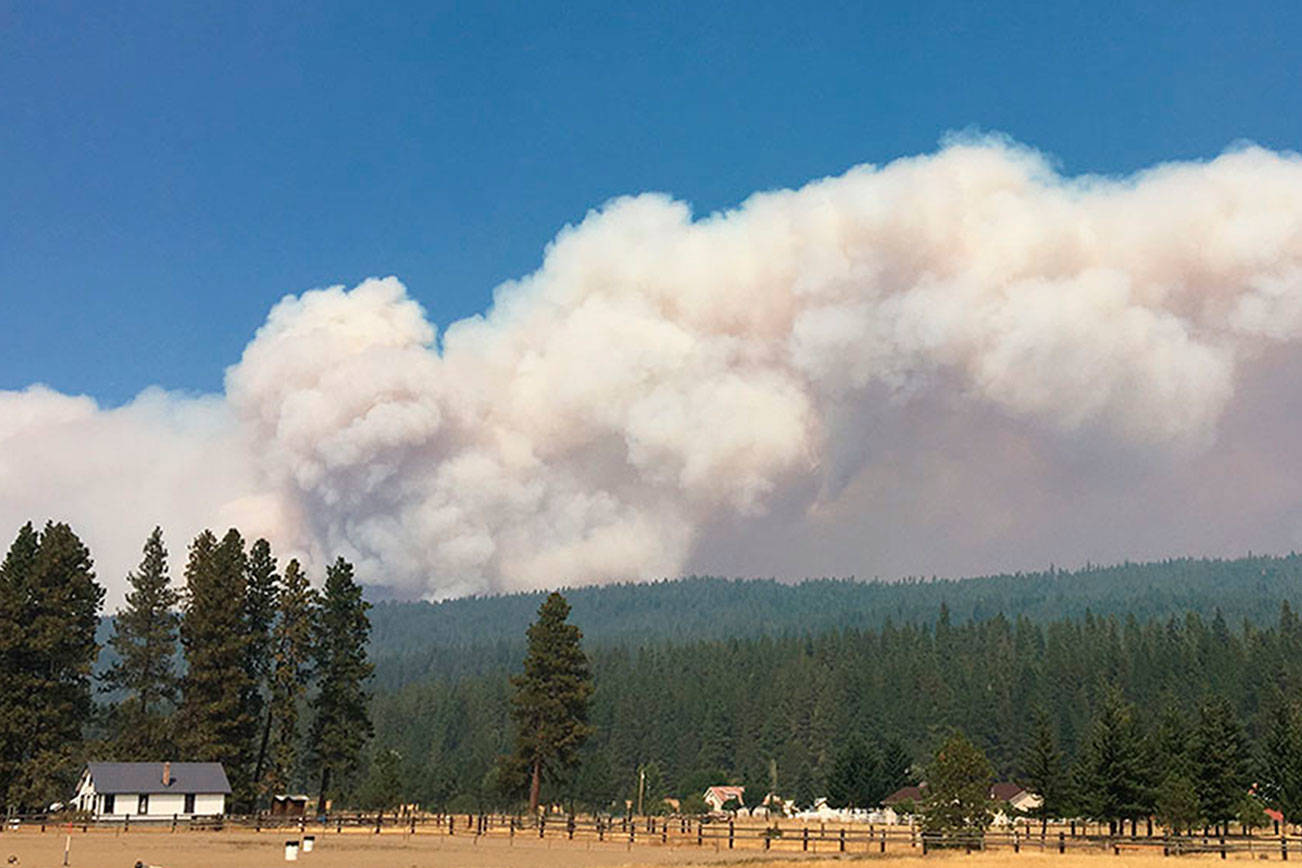Amid the Washington COVID-19 outbreak, the state’s wildfire firefighting agencies are quietly gearing up for a season that could be anything but normal.
As of early afternoon on March 18, there were more than 1,000 confirmed COVID-19 cases in the state, and 52 deaths. King County officials are expecting peak hospital demand to come within eight weeks, but the outbreak could continue until a vaccine is developed, which could take months.
This presents a host of problems for wildfire response, said Washington State Department of Natural Resources (DNR) commissioner Hilary Franz. The state will have to figure out how to keep firefighters from getting infected, how to secure enough incident management teams and rethink the way it attacks fires.
“This is not something we’ve experienced before, right, where we couldn’t have firefighters in close quarters,” she said.
Fire camps ordinarily house 1,000 firefighters in tents. But with the outbreak, and recommendations to keep people six feet apart, DNR officials have to rethink how they structure fire response. There’s nothing solid yet, but Franz said her department was starting to talk about what this fire season’s response could look like.
One potential way is to increase the use of helicopters for fire response. This could help keep the number of on-the-ground firefighters down. But aircraft are expensive and in high demand during fire seasons. The DNR currently operates 10 UH-1H helicopters, which are modified with water and fire suppressant capabilities.
If the number of firefighters is limited, either because of an outbreak in the ranks or due to a drop in volunteers, more aircraft might be needed. The DNR’s 1,500-member agency is already responding to requests for assistance during the outbreak.
Another critical resource are incident management teams. There are 16 national “type 1” incident management teams that can deploy across the nation. These teams handle the most complex and intense emergencies. There are 35 “type 2” teams.
Franz said she was already concerned about shortages of incident management teams as they respond to COVID-19, and during recent wildfire-heavy years, these teams were already stretched.
“We are recognizing that it is going to be hard for us to find that, and we’re starting to put things in place,” she said.
However, details were in short supply. The full fury of fire season is still mid and late summer, but last year, more than 50 fires broke out in March.
The 2019 fire season, however, ultimately proved milder than 2018. Franz is hoping for a repeat of last year.
The current outlook from the National Interagency Fire Center for the Northwest said normal large fire potential is expected across the region through June. Central Washington was drier than normal in February, as was central Oregon. Dry and warm conditions region-wide are likely from April through June.
Training will continue this year, albeit at a reduced level. The first of three wildfire academies will take place in mid-May, said DNR spokesperson Janet Pearce.
Carol Connolly, spokesperson for the Northwest Interagency Coordinating Center, said fire managers across the region are discussing the outbreak and its implications for wildfire season.
“We are just at the very beginning of this,” Connolly said.
Nonessential training in Washington and Oregon has been canceled and more decisions are likely to be made in coming weeks about the agency’s response.
Wildfire Today reported March 17 that several federal fire management agencies were working off a 2010 document outlining how incident management teams should handle infectious diseases.
Competition for resources between states during wildfire season is usually intense, especially during years with widespread fires. Franz said it’s unknown how their firefighting resources will change, how quickly fire season will start, where across the West will see fires and how COVID-19 or natural disasters could impact it.
“The challenge we have right now is every single state is grappling with this issue,” she said. “At this point we are thinking outside of the box.”
Talk to us
Please share your story tips by emailing editor@kentreporter.com.
To share your opinion for publication, submit a letter through our website https://www.kentreporter.com/submit-letter/. Include your name, address and daytime phone number. (We’ll only publish your name and hometown.) Please keep letters to 300 words or less.

